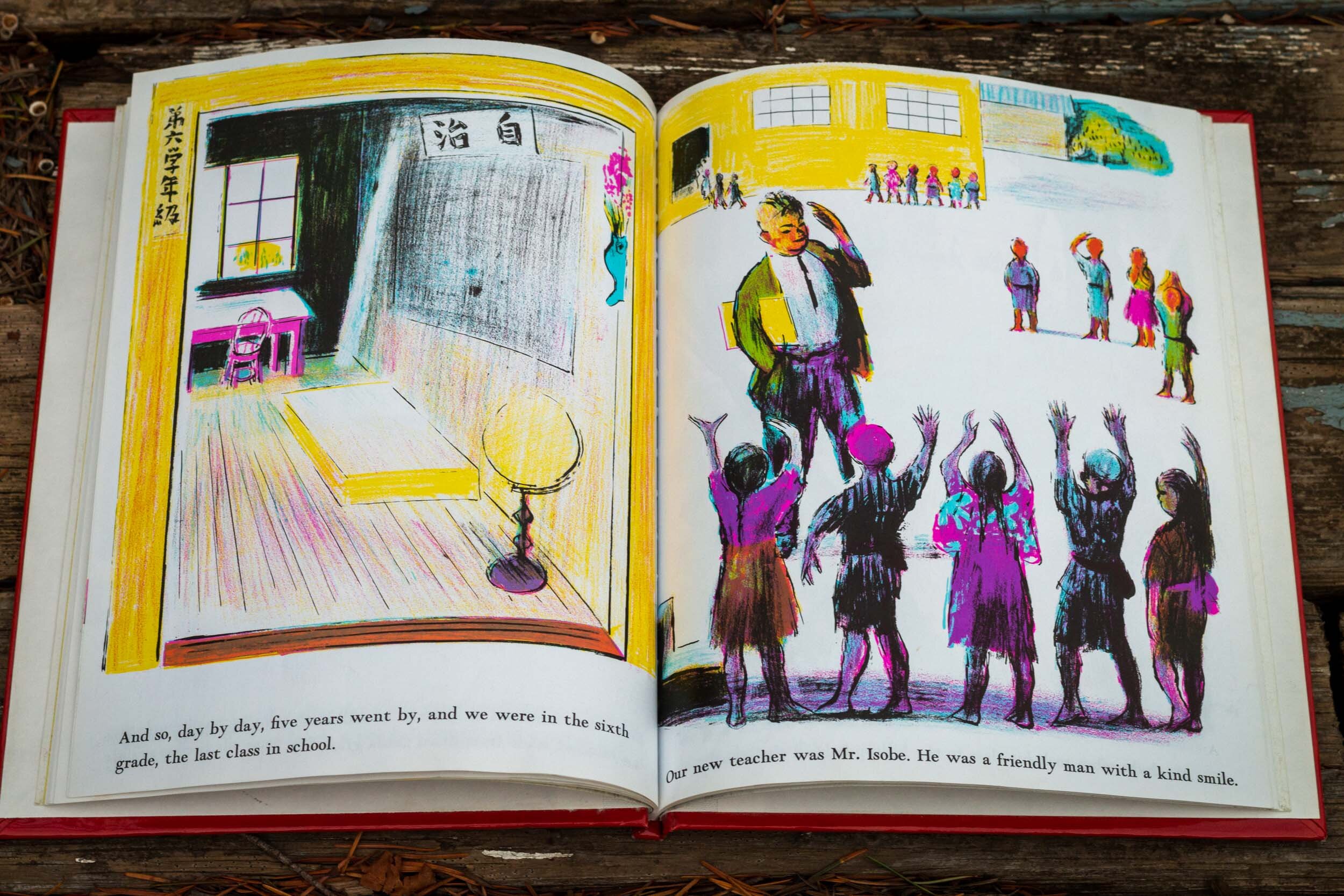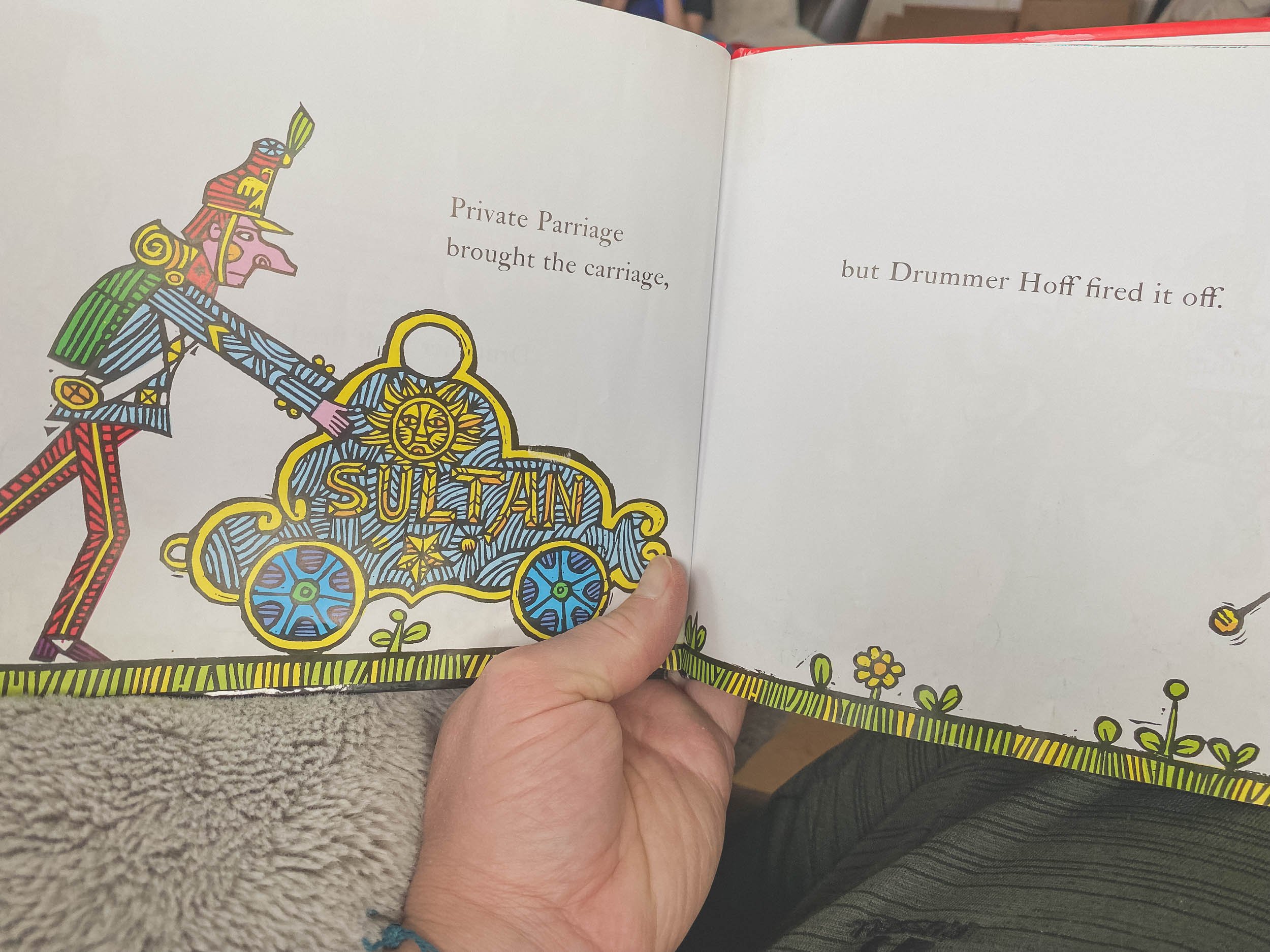Caldecott books : "Crow Boy" (1956 Honor Book)
Award rituals for art are a funny and strange thing; the difference among awards that mean something and awards that are meaningless has a lot to do with the transparency of criteria used, consistency of applying that criteria, and a historical record of maintaining a high creative standard that appears to be focused on quality of the product itself, not the commercial success or lack of. Difficult.
Art is a great thing to argue and debate; some Caldecott winners and honor books I peruse and don’t get. Why is this considered amazing? But overall, I love the legacy of the Caldecott Medal and how it is still meaningful in terms of honoring great picture books.
This was my first time picking up Taro Yashima’s Crow Boy. First of all, you may be wondering why I’m reading outside, and why there are no children. I have one good answer and one not so good answer:
I am reading outside because I like being outside, and doing many things outside, such as reading and eating. Sadly, I do not have a lunch at the moment.
There are no children because they were being buttheads when I was taking this self-portrait, and I had not the strength to mandate they join me. I did read this with two or three of them. The ten-year old liked the illustrations a great deal, and was intrigued, if not overwhelmed by the story. Our two-year old enjoyed the book and paid attention to the whole story, but did not have great interest in returning to it for multiple readings or perusings.
I fell in love with the drawings right away; the artwork is stunning. Crayon, ink, pencil, tempera. Nothing fancy in its style, simply beautifully rendered images of humans, birds, and nature in a delicate yet textured realism.
The story follows Chibi (“tiny boy”), an outcast who is alternately mocked and left out by his classmates. He’s weird - or appears weird to everyone. After several years, a new teacher shows up and discovers Chibi’s talents, which change his classmates’ understanding of him…
…at the end, at the school talent show where he shares his talent, everyone comes to realize how hard he has worked to come to school every single day; how he trudged and hiked and marched through miles of mountains every day to be there.
The illustrations are great for all ages. The story is simple and probably aimed at grades 2-4-ish, but is relevant to every age with its message about understanding, empathy, and the painfulness of exclusion. The world can always use well-told stories about the importance of kindness and reaching out.
One of my favorites, from an illustration standpoint.
Some questions to talk about with all ages.
Why does Chibi keep coming to school?
How is this school different, and how is it similar to the one you go to?
Why doesn’t anyone talk to him or stick up for him early on?
What motivates the teacher to help Chibi?
How do you think Chibi’s self-confidence changes from the beginning to the end?
How can you look for ways to include others in whatever situation or environment you’re in?
What is the difference between “a group of friends just hanging out” and “a clique?” How does the idea of exclusivity factor into answering this question?














